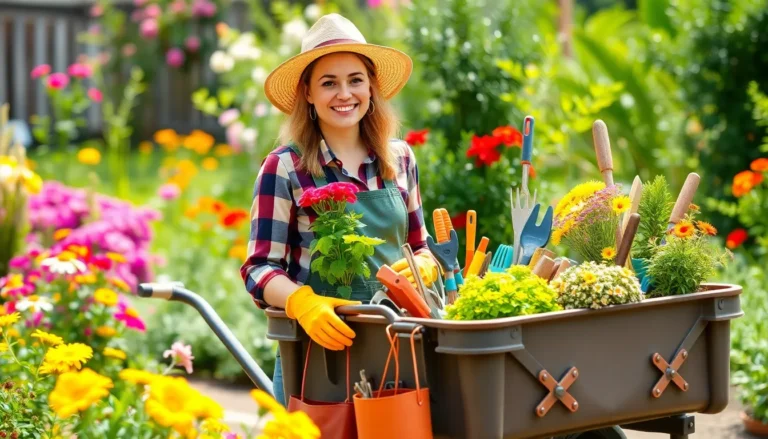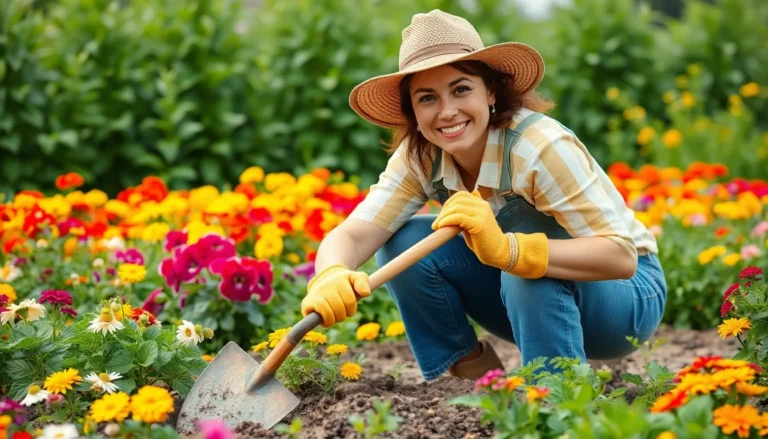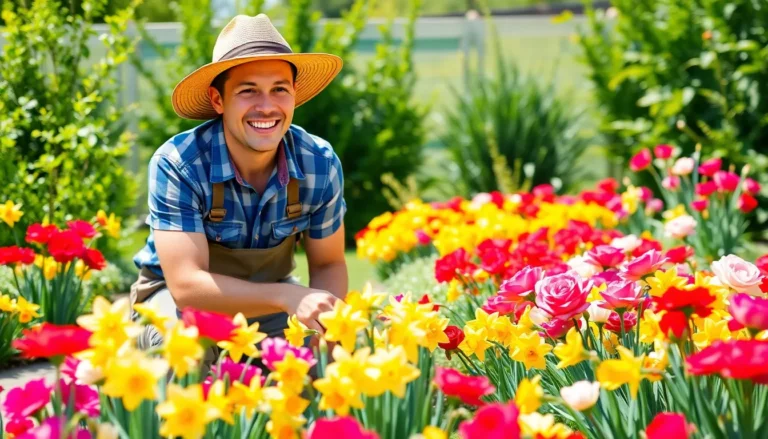Imagine transforming your outdoor space into a vibrant garden oasis without the hassle of traditional landscaping. Bucket gardening is the answer! This clever method allows anyone with a little creativity and a few buckets to grow their own veggies, herbs, and flowers. No green thumb? No problem!
What Is Bucket Gardening?
Bucket gardening involves using containers, such as buckets, to cultivate plants. This approach allows for flexibility, as individuals can place buckets on patios, balconies, or even indoors. Vegetables, herbs, and flowers thrive in this setup, making it an ideal option for limited space.
Containers provide excellent drainage, a critical factor for healthy root systems. Choosing the right bucket size, typically ranging from 5 to 10 gallons, promotes optimal growth. Planting multiple seeds in each bucket can yield a diverse garden experience.
This method accommodates various plant types. For instance, cherry tomatoes, basil, and marigolds thrive in bucket gardens. Transitioning from traditional gardening to bucket gardening offers simplicity and ease of access, especially for beginners.
Maintaining soil quality is essential in bucket gardening. Using a quality potting mix ensures nutrient availability while preventing compaction. Regular watering, as needed, supports plant health, particularly during hot weather.
The option for vertical gardening becomes available through bucket arrangements. Stacking buckets provides enhanced space efficiency, creating visually appealing designs. Utilizing different colors and materials for the buckets can also improve aesthetics.
Bucket gardening combines versatility with creativity, making it accessible for gardeners of all levels.
Benefits Of Bucket Gardening
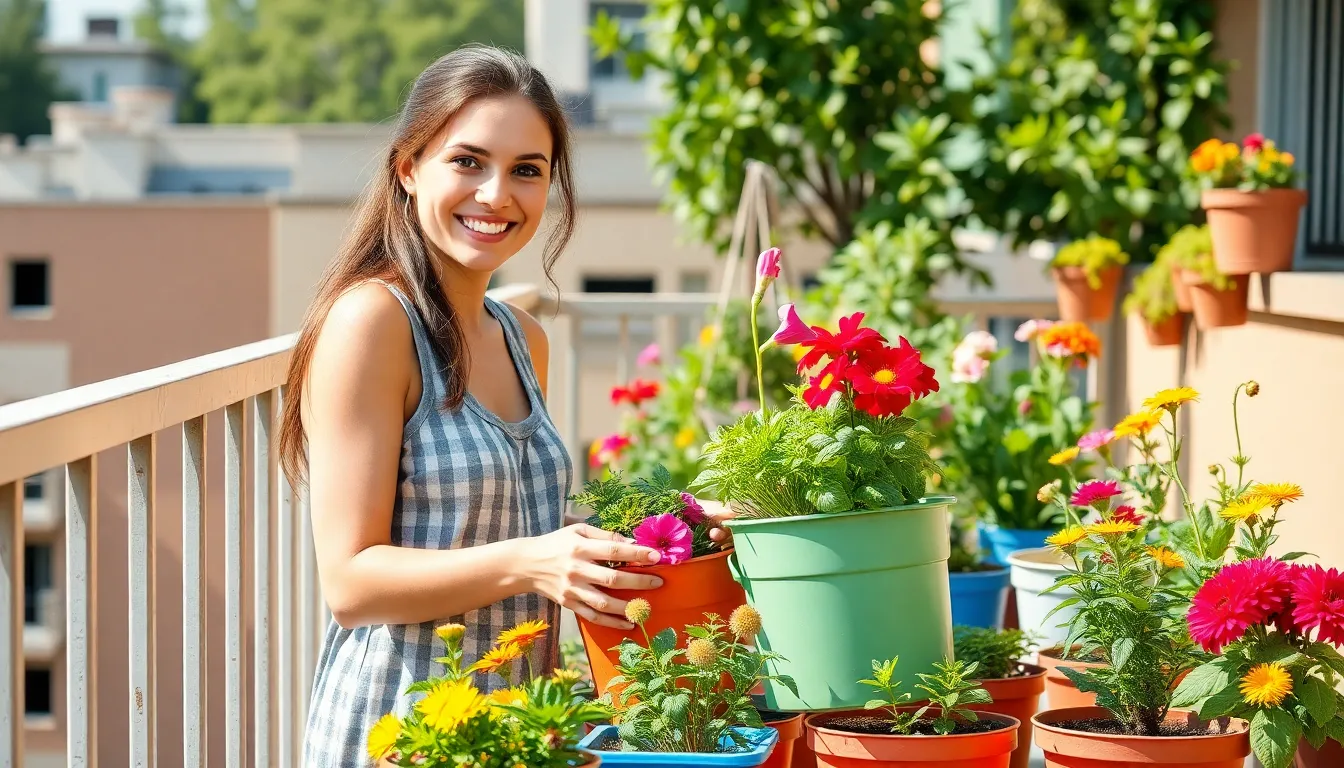
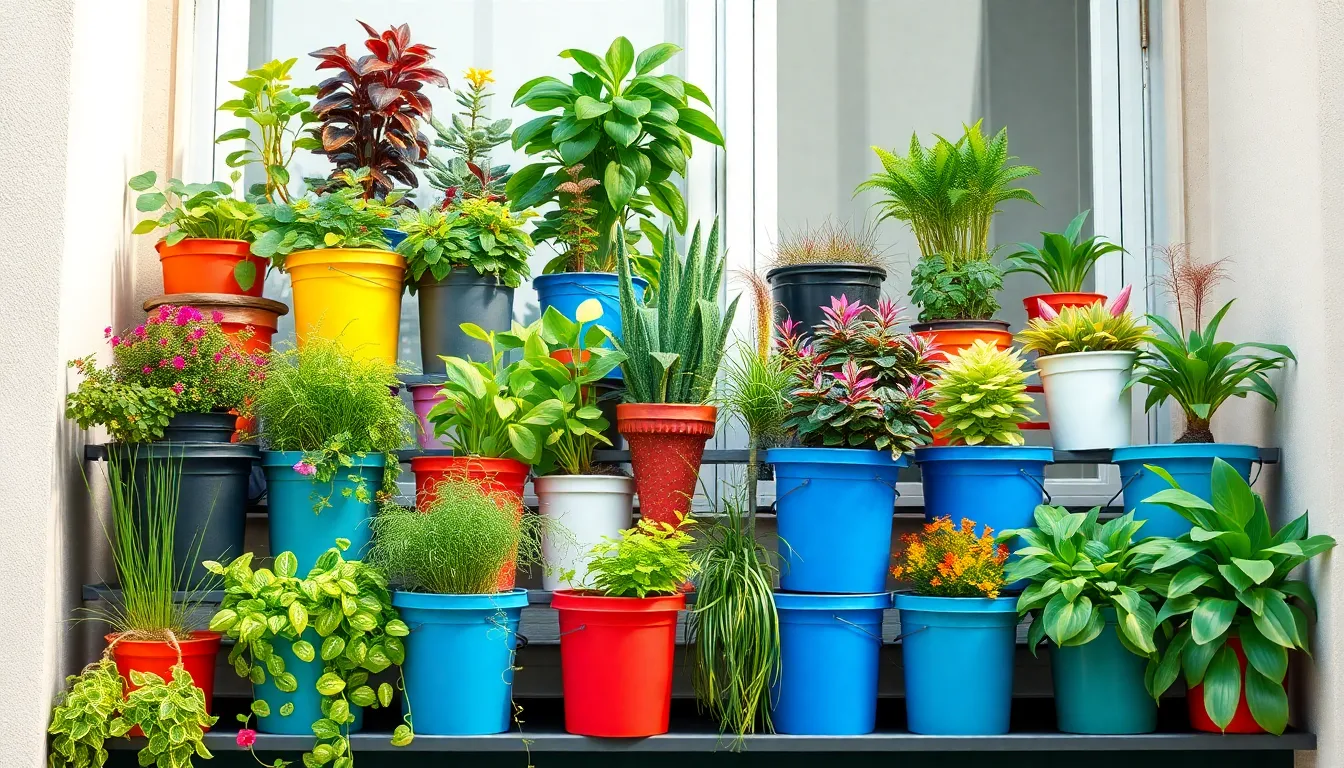
Bucket gardening offers numerous advantages, making it a popular choice for urban and novice gardeners. This method fosters creativity and accessibility for growing plants in various settings.
Easy Accessibility
Accessibility ranks high among the benefits of bucket gardening. Gardeners can position buckets on balconies, patios, or even indoors. They can cultivate plants at a comfortable height, minimizing strain. Moving containers easily allows adjustment based on sunlight or weather conditions. Individuals can quickly replace or rearrange plants without disturbing a garden bed. Minimal investment in tools or space is necessary, further enhancing convenience. This accessibility empowers anyone to embrace gardening, regardless of experience or physical limitations.
Space Optimization
Space optimization serves as another key benefit. Bucket gardening helps utilize limited spaces efficiently. Urban dwellers find this approach particularly useful, as it maximizes small areas. Stacking buckets provides vertical growth, creating a lush garden in confined settings. Additionally, it enables the creation of diverse plant combinations in one location. By using various container sizes, individuals can tailor their gardens to unique spaces. This optimization transforms patios or balconies into vibrant green sanctuaries while maintaining easy maintenance.
Getting Started With Bucket Gardening
Bucket gardening offers a straightforward way to dive into gardening, even in small spaces. Knowing how to set up your buckets effectively can set the foundation for thriving plants.
Choosing The Right Buckets
Select buckets that provide proper drainage and sufficient depth for plant roots. Most gardeners opt for food-grade plastic buckets, which are durable and safe for growing edibles. Look for sizes between 5 to 10 gallons to accommodate a variety of plants. Consider using buckets with handles for easy maneuverability. Paint or decorate buckets to add personal flair while protecting them from UV damage. Ensure that each bucket contains drainage holes to prevent water logging.
Soil Selection
Using high-quality potting mix is crucial for successful bucket gardening. A good mixture retains moisture and provides essential nutrients for plants. Prioritize organic options that include compost, perlite, and vermiculite for optimal drainage and aeration. Avoid using garden soil, as it may contain pests and diseases. Test the soil’s pH to ensure it suits the selected plants. Regularly refresh the soil mix to maintain nutrient levels throughout the growing season.
Plant Selection
Select plants according to the available sunlight and climate conditions. Cherry tomatoes, basil, and marigolds thrive well in buckets. Choose a mix of herbs, vegetables, and flowers to enhance the garden’s aesthetics and functionality. Focus on companion planting to maximize space and promote healthy growth. Plant smaller varieties in smaller buckets to utilize space efficiently. Consider seasonal variations to keep the garden vibrant year-round.
Tips For Successful Bucket Gardening
Successful bucket gardening requires attention to detail and mindful practices. Gardeners can maximize their yield while enjoying the process by applying effective techniques.
Watering Techniques
Watering plays a crucial role in plant health. Distributing water evenly throughout the soil ensures that roots receive adequate moisture. Implementing a consistent watering schedule, especially during hot days, enhances growth. Adjustments may be necessary based on the specific needs of each plant. For example, herbs like basil need less water than heavy feeders like tomatoes. Draining excess water from buckets also prevents root rot. Utilizing a hose with a spray nozzle can help control water flow, avoiding oversaturation.
Pest Management
Pest management is vital for thriving bucket gardens. Regularly inspecting plants allows gardeners to spot potential issues before infestations occur. Introducing beneficial insects, like ladybugs, can naturally control unwanted pests. Applying organic pesticides reduces chemical exposure while being effective against harmful insects. Maintaining healthy soil also strengthens plants, making them more resistant to pests. Placing a barrier, such as fine netting, protects vulnerable plants from insects. Rotation of plant varieties each season minimizes the risk of consistent pest problems.
Common Mistakes To Avoid
Choosing the wrong buckets can hinder plant growth. Focusing on food-grade plastic buckets between 5 to 10 gallons ensures proper drainage and depth. Planting too closely together limits airflow and nutrient absorption. Maintaining a proper space between plants allows them to flourish.
Neglecting soil quality leads to poor plant health. Using high-quality potting mix, preferably organic, supports vibrant growth. Watering inconsistently stresses plants. Regular, even watering prevents root rot and encourages robust development.
Ignoring sunlight requirements creates challenges. Selecting plants based on sunlight exposure optimizes growth potential. Failing to monitor pest activity can jeopardize the garden. Conducting regular inspections helps identify issues early.
Overlooking the importance of companion planting leads to missed opportunities. Pairing compatible plants enhances growth and repels pests. Applying chemical pesticides may harm beneficial insects. Utilizing organic options to manage pests supports overall ecosystem health.
Finally, underestimating the impact of weather conditions affects plant wellbeing. Adjusting bucket placements according to weather patterns maximizes growth benefits. Understanding these common mistakes can significantly enhance the success of bucket gardening endeavors.


